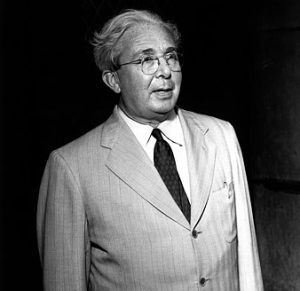Last Thursday at the London premiere of Christopher Nolan's new film Oppenheimer, Máté Haumann, who played Leo Szilard, was on the red carpet.Continue reading

Robert Oppenheimer played a key role in the creation of the atomic bomb, later becoming a critic of the technology, making him one of the most influential but controversial scientists in modern history. However, what many people do not know is that two Hungarian physicists, Leo Szilard and Edward Teller, also contributed to the invention of the world’s most destructive weapon.
One of 2023’s most anticipated films is Oppenheimer, directed by Christopher Nolan, starring Cillian Murphy, which can be seen in theaters from July 20. The film pays tribute to one of the most famous, influential, and controversial scientists in modern history, one of the fathers of the atomic bomb. The film also features a Hungarian actor, Máté Haumann, who portrays the role of the inventor, Leo Szilard.
In 1939, with help from Leo Szilard, Albert Einstein wrote a letter to President Franklin D. Roosevelt, drawing attention to the nuclear threat. At the time, the issue was already of great concern to physicists and little to US policymakers, but the German efforts and experiments eventually spurred the highest circles to action.

Leo Szilard in 1960. Photo via Wikipedia
He was actively involved in the Manhattan Project, but later regretted his efforts, because, like many other Americans, he saw even before the atomic bomb was launched that the World War would end quickly anyway as a result of the Soviet Union’s intervention against Japan.
Robert Oppenheimer was invited to join the first Manhattan Project to create nuclear weapons in the summer of 1942.
The American theoretical physicist was considered notoriously left-wing; however, his patriotism, anti-fascism, and desire to conform made him a suitable subject for recruitment.
As part of the program, the researcher ran a unit, then known as Project Y, responsible for the core of the development, the science side. After a few months, the interdisciplinary team, some of the most renowned physicists and other experts of the time, including Edward Teller (Ede Teller), confirmed that the bomb could be created, at least in theory.

Edward Teller in 1958, as director of the Lawrence Livermore National Laboratory. Photo via Wikipedia
When Project Y was launched, the Germans had, by some estimates, an 18-month lead in the development of the atomic bomb. After years of hard work,
the first nuclear test in history, Trinity, was carried out on July 16, 1945 at a base in New Mexico; however, by then the Third Reich had collapsed and the war in Europe had ended.
The atomic bomb was later deployed in the Pacific theater of war, destroying Hiroshima on August 6, and Nagasaki on August 9 in 1945.
Now I have become death, the destroyer of worlds,”
were Oppenheimer’s exact words at the moment of the bombing.
Later, the scientist declared that atomic bombs were not defensive weapons, but weapons of terror, and that the United States must find a way to control the international spread of the technology.
The physicist had already been arguing against the development of hydrogen bombs while working for the Atomic Energy Commission in the early 1950s, and was making influential enemies. This was a time of anti-communist witch-hunts in the United States, often based on trumped-up charges, and Oppenheimer’s connections and views made him a perfect target.
In 1954, political pressure paid off: the Atomic Energy Commission called on the scientist, who had been working as a consultant, to report on his links with communist organizations. The fear was that he might be a Soviet spy.
After the Committee suspended his security clearance, he requested a hearing, at which Edward Teller testified.
Although the two scientists worked together on the Manhattan Project, the Hungarian physicist soon lost interest once he became convinced of the possibility of the atomic bomb. It was then that he started to work on fusion weapons, and later pursued his own research on hydrogen bombs.
After the war, Oppenheimer advocated the scaling back of the atomic bomb, while Teller continued to work on the hydrogen bomb.
The relationship between the two physicists deteriorated, and they actively rivaled each other, so when the Hungarian researcher had the opportunity, he crossed his colleague, saying his actions seemed confused and he wanted the country’s vital interests to be placed in hands he better understood and therefore trusted.
It is assumed that because of Oppenheimer’s connections and past, he would have been removed from the committee even without Teller’s comments, but the Hungarian physicist’s own words had serious consequences for him. While crowds of experts stood up for Oppenheimer,
Teller’s testimony caused a huge outcry in scientific circles and the Hungarian-born scientist was essentially excommunicated from academia.
The Manhattan Project, and its legacy, will remain on the planet for millions of years in the form of material deposited by nuclear weapons testing.
Via 24.hu, Featured image via Wikipedia.